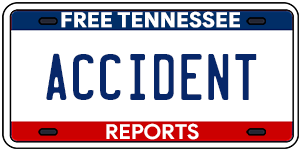What Is In My Tennessee Accident Report?
If you were involved in a collision on Tennessee roads, your well-being is always your first priority. However, as soon as you are able, you should request a copy of your official Tennessee Uniform Traffic Crash Report. This report will contain specific details about your accident that will be put into use by the insurance company while determining your settlement.
Having access to an official crash report can strengthen your claim significantly. Without it, there is a possibility you will not receive enough money compensation for your medical bills, your damages, your lost wages, and any other expenses.
Your Tennessee Crash Report Explained
Seeing your accident report for the first time can be overwhelming. There is a significant amount of information presented using numeric codes and abbreviations. This report can be challenging to decipher for the everyday driver. That is why we have broken down each section of your report to help you better understand its contents and the claims process.
The first section of your Tennessee Uniform Traffic Crash Report is where the responding officer will take down essential details about the date and location of your crash, including:
- The reporting agency type (local police, sheriff’s office, THP, etc.)
- The date, time, and day of the week when the crash occurred.
- The county, city, type of roadway where the crash occurred.
- The latitude and longitude coordinates.
- Type of crash (fatal, injury, property damage, hit-and-run, etc.)
If your accident involved a school bus or caused a police pursuit, that information will also be listed in this section.
The second section will contain identification details for all drivers involved in your accident, including their names, birth dates, addresses, phone numbers, and driver’s license information.
Here, the officer will also detail the severity of the crash and the extent of any injuries sustained by those involved, such as:
- If airbags were deployed.
- If any person was ejected from their vehicle.
- If any person needed to be extricated from their vehicle.
- EMS and hospital information (if applicable.)
The third section of your report is where the investigating officer will detail all pertinent information regarding all vehicles involved, including:
- Vehicle make, model, year, and color.
- Vehicle Identification Number
- License plate state, number, and expiration year.
- Vehicle owner’s name, address, and phone number.
In this section, the investigating officer is required to put down their name, badge number, agency, car number, and reporting date. Your insurance company could use these details in order to verify the third-party investigator’s account of what occurred.
This section can be especially difficult to understand because it is made up completely of numeric codes. The office will use these codes to record the circumstances leading up to the crash, fault, and causation. There are hundreds of options listed on the page; the officer will fill in the corresponding number for each section to establish the following:
Most harmful event per vehicle, including:
- Collision with a non-fixed object (pedestrian, cyclist, animal, etc.)
- Collision with a fixed object (building, bridge, guardrail, utility pole, etc.)
- Non-collision (rollover, vehicle fire, falling object, etc.
Diver factors, including:
- Impairment.
- Distraction.
- Fatigue.
- Asleep.
- Improper lane change.
- Failure to yield.
- Failure to use lights or signals.
- Passenger interference
Intoxication information, including:
- Presence of alcohol or drugs in the driver’s system.
- The method used to determine the presence of alcohol or drugs.
- Type of drugs found in the vehicle.
- Failure to take a sobriety test.
Roadway and weather information, including:
- Construction zone
- Light conditions
- Weather conditions (fog, rain, snow, etc.)
- Location in the roadway (shoulder, median, parking lot, etc.)
In this section, the officer will take down identifying information for all non-drivers involved in the crash. This will include:
- Names.
- Addresses.
- Ages.
- Position in the vehicle.
- Injury information.
- If safety equipment was in use.
- Airbag deployment.
In this section, the officer will include as much information as possible about the damages sustained in the wreck, including:
- Point of impact and damages.
- The extent of the damages.
- The estimated cost of the damages.
- Vehicle Defects.
- Towing information (if applicable)
If a commercial vehicle is involved in your accident, the officer will use this supplemental page to list all information pertaining to that vehicle, such as:
- Carrier information.
- Hazardous materials information.
- Commercial vehicle body type and configuration.
- The sequence of events (jackknifed, overturned, loss of cargo, etc.)
This final section is where the officer will present a diagram and narrative of how the accident transpired. They will use this portion to spell out exactly what they believe led up to the crash and who is at fault. In the diagram section of the crash report, the officer will draw the location of all vehicles involved in the crash and their relation to any nearby cross streets or road markings.
The narrative and diagram section of your report will be examined very closely by the insurance company. The officer represents an objective, third-party witness to your accident. Therefore, their option will be taken into great consideration by the adjuster assigned to your claim when determining the type of settlement you receive.
Tennessee Traffic Accident Report FAQs
The state of Tennessee requires you to contact police and file an accident report for any crash that results in the following:
- Any person is injured or killed.
- Property damage over $50.
- The city requires you to file a report.
- Your insurance company requires you to file a report.
Do not let unnecessary fees keep you from obtaining legal information that is rightfully yours. Simply fill out the brief questionnaire to request a copy of your Tennessee Uniform Traffic Accident Report today!
